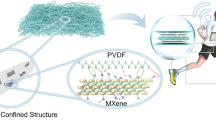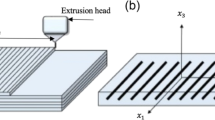Abstract
A popular and useful piezoelectric actuator is the stack. Unfortunately with this type of actuation architecture the long lengths normally required to obtain necessary displacements can pose packaging and buckling problems. To overcome these limitations, a new architecture for piezoelectric actuators has been developed called telescopic. The basic design consists of concentric shells interconnected by end-caps which alternate in placement between the two axial ends of the shells. This leads to a linear displacement amplification at the cost of force; yet the force remains at the same magnitude as a stack and significantly higher than bender type architectures. This paper describes the fabrication and experimental characterization of three different telescopic prototypes. The actuator prototypes discussed in this paper mark a definitive step forward in fabrication techniques for complex piezoceramic structures. Materials Systems, Inc. has adapted injection molding for the fabrication of net shape piezoceramic actuators. Injection molding provides several advantages over conventional fabrication techniques, including: high production rate, uniform part dimensions, uniform piezoelectric properties, and reduced fabrication and assembly costs. Acrylate polymerization, developed at the University of Michigan, is similar to gelcasting, but uses a nonaqueous slurry which facilitates the production of large, tall, complex components such as the telescopic actuator, and is ideal for the rapid manufacture of unique or small batch structures. To demonstrate these fabrication processes a five tube telescopic actuator was injection molded along with a very tall three tube actuator that was cast using the acrylate polymerization method. As a benchmark, a third actuator was built from off-the-shelf tubes that were joined with aluminum end-caps. Each prototype's free deflection behavior was experimentally characterized and the results of the testing are presented within this paper.
Similar content being viewed by others
References
K. Bridger, L. Jones, F. Poppe, S. A. Brown and S. R. Winzer, Smart Structures and Materials: Industrial and Commercial Applications of Smart Structures Technologies, San Diego, CA, 1996, p. 341.
G. H. Haertling, American Ceramic Society Bulletin 73 (1994) 93.
C. Shakeri, C. M. Bordonaro, M. N. Noori and R. Champagne, Proceedings of the Smart Structures and Materials Conference, Newport Beach, CA, 1999, p. 63.
C. C. M. Wu, M. Kahn and W. Moy, J.Amer.Ceram.Soc. 79 (1996) 809.
X. Zhu, Q. Wang and Z. Meng, J.Mater.Sci.Lett. 14(1995) 516.
R. K. Panda, A. L. Kholkin and A. Safari, in Proceeding of the 11th IEEE International Symposium on Applications of Ferroelectrics, Montreaux, Switz., 1998, p. 265.
A. Safari and S. C. Danforth, in Proceeding of the 11th IEEE International Symposium on Applications of Ferroelectrics, Montreaux, Switz., 1998, p. 229.
L. Bowen and K. French, in Proceedings of the 8th IEEE International Symposium on Application of Ferroelectrics, Greenville, SC, 1992, p. 160.
A. T. Crumm and J. W. Halloran,J.Amer.Ceram.Soc. 81 (1998) 1053.
R. L. Gentilman, D. F. Fiore, H. T. Pham, K. W. French and L. J. Bowen, Ceramic Transactions 43 (1994) 239.
J. S. Reed, Ceramic Transactions: Ceramic Powder Science IIB 1 (1988) 601.
K. Venkataswamy, R. Waack, B. E. Novich and J. W. Halloran, US Patent no. 4978643 (1990).
G. T.-M. Chu, G. A. Brady, W. Miao, J. W. Halloran, S. J. Hollister and D. Brei, “Solid Freeform and Additive Fabrication,” edited by D. Dimos, S. C. Danforth and M. J. Cima, MRS Symposium Proceedings, Vol. 542, 1999, p. 119.
O. O. Omatete, M. A. Janney and R. A. Strehlow, Ceramics Bulletin 70 (1991) 1642.
M. A. Janney, O. O. Omatete, C. A. Walls, S. D. Nunn, R. J. Ogle and G. Westmoreland, J.Amer.Ceram.Soc. 81 (1998) 581.
D. Brei and N. T. Berner, in Proceedings of the ASME International Mechanical Engineering Congress and Exposition— Adaptive Structures and Material Systems, Nashville, TN, 1999, p. 189.
Author information
Authors and Affiliations
Rights and permissions
About this article
Cite this article
Alexander, P.W., Brei, D., Miao, W. et al. Fabrication and experimental characterization of d31 telescopic piezoelectric actuators. Journal of Materials Science 36, 4231–4237 (2001). https://doi.org/10.1023/A:1017985425629
Issue Date:
DOI: https://doi.org/10.1023/A:1017985425629




